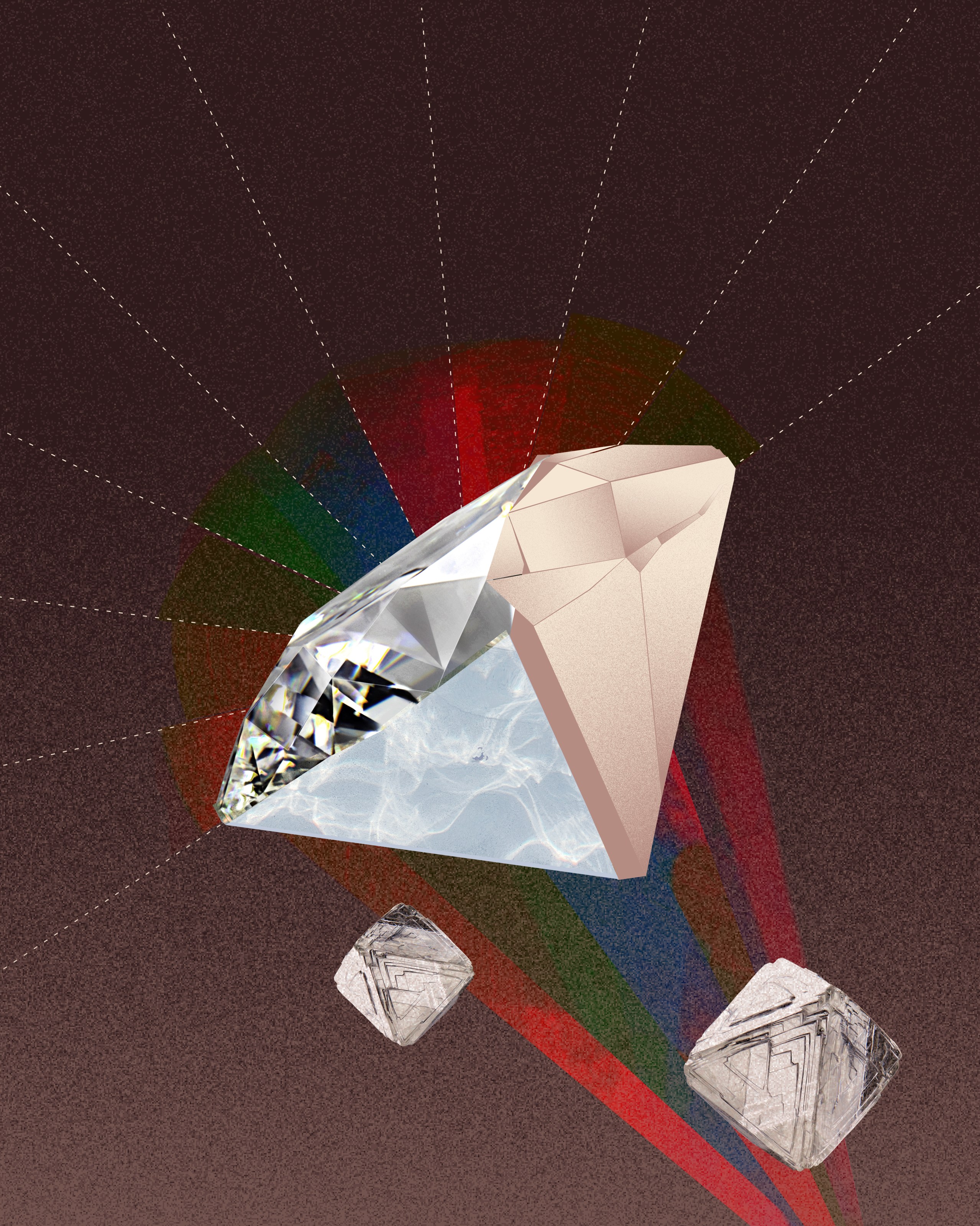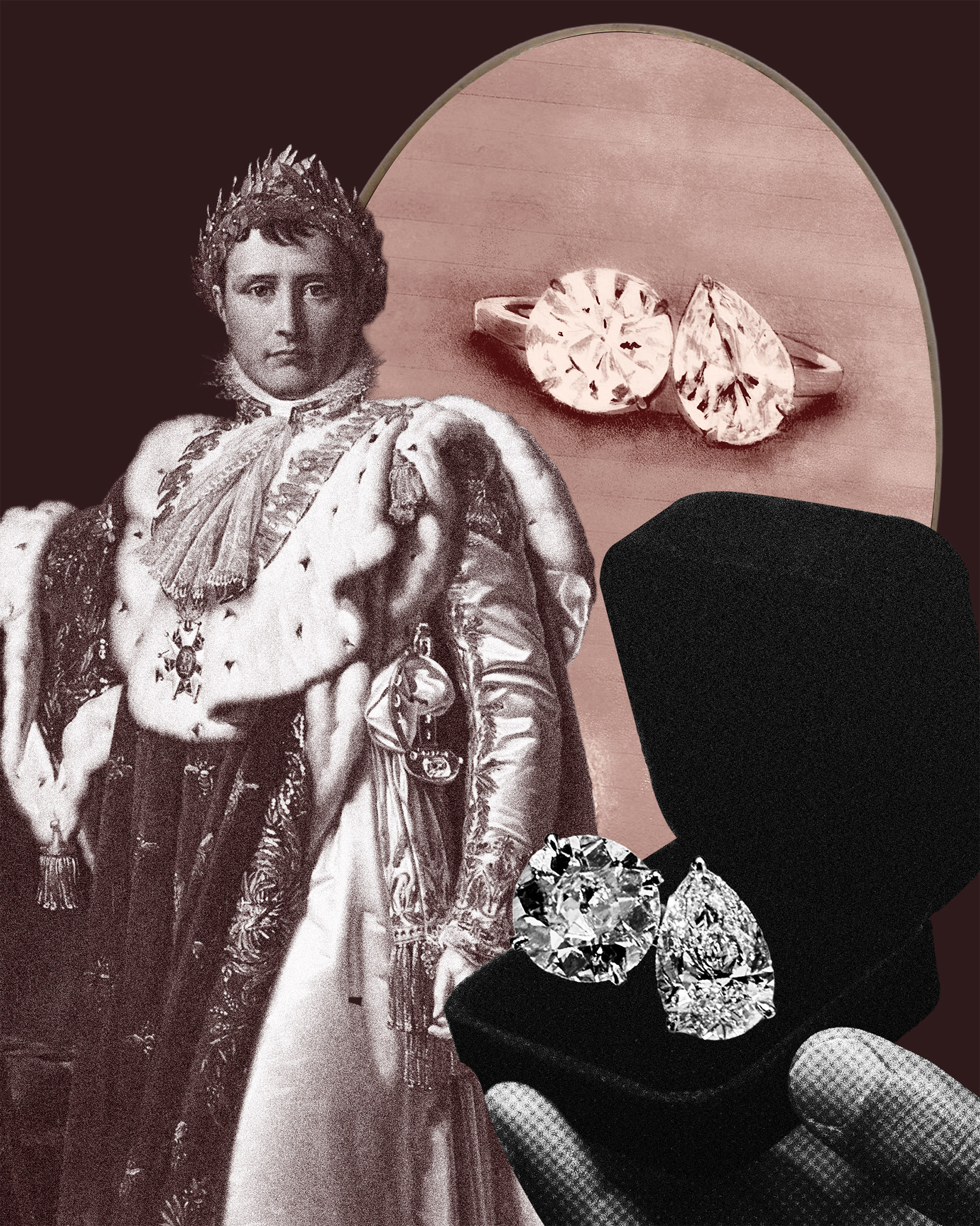There’s Something About Natural Diamonds:
On the Real, the Rare, and What Endures
Natural diamonds carry the brilliance of something shaped by the earth and kept through generations. Read more about why their allure lasts, in ways that outlive trend and imitation.
Nothing compares to the story a natural diamond holds within it. Diamond Images Courtesy: Shree Ramkrishna Exports
To look at a diamond is to see time solidified. Every natural diamond carries the imprint of the earth inside it; carbon under pressure, rearranged by heat and chance until it learns to hold the light. Born in darkness, it surfaces with brilliance. Its rarity begins there—in that arithmetic, a sum of all that had to happen for a diamond to form.
A natural diamond forms under circumstances so precise they can never be recreated, even if the process continues elsewhere beneath the surface. Each one is a closed geography, crossing from earth time into human time, and once it enters our measure of time, it begins another life—worn, kept, passed on, inherited, and renewed.
All of this shapes what makes a natural diamond distinct: the conditions of its making that determine its brilliance and clarity, the character of each stone, the landscape it comes from, and the way it continues through different hands and generations.

No Two Stones Are The Same
All real diamonds carry a pattern of fine lines and grain, formed over time and visible when light moves across it. Even when set together in a ring or arranged into a heart, no two stones return light the same way. Under ultraviolet light, it releases a small breath of blue; gemologists call this fluorescence, an afterimage of the conditions that made it—something absent in man-made stones.
Designers often speak of this responsiveness to light as part of the natural diamond’s presence. As Shreyans Dholakia, Entrepreneur & Brand Custodian, Shree Ramkrishna Exports tells us, “What truly sets one natural diamond apart from another is its fire and scintillation—that inner life, that play of light which results from a perfect balance of cut and symmetry. You can have two stones with identical grades, but one just feels more alive. That sparkle, that character— it is something only nature can create and only a master craftsman can reveal.”

The same patience that shapes a diamond under the earth continues in the hands that cut and set it.
Cut, Colour, and Continuity
Across the subcontinent, this distinct mastery has endured. In diamond workshops where skill runs through generations, karigars inherit more than technique—they inherit intuition. To understand the stone’s grain and structure, to know how much can be shaped and how much must be left alone is a craft.
Value, in its most formal sense, rests on four measures: cut, colour, clarity, and carat. A perfect cut reveals not just light, but depth. Colour adds another layer to this individuality. Some stones are clear, while others carry faint hues—pinks, blues, yellows—created by trace elements or shifts within the earth. These nuances lend a diamond its individuality—the remnants of nature, time, and geography.

What We Keep, What We Inherit
Yet, for all its formal vocabulary, the essence and value of a natural diamond lies in what cannot be measured—the intangible nature of emotion and sentiment. They turn up in moments of celebration and change: a birthday, an inheritance, a promise, a beginning, sometimes even an ending. Some are given; others chosen. To buy a diamond for oneself is an act of self-acknowledgement—a way of saying, ‘this is mine, this is me’.
Across India, the story of diamonds is also a story of continuity. From the Golconda mines that once supplied to the treasuries of empires, to the jewels that circulated through courts from the Mughals to the Maharajas of Jaipur and Patiala, diamonds have long signified power, devotion, and permanence. They marked allegiance and divinity—worn on crowns and hilts, set into idols and armour. The Mughals treated the stone as a sign of power and devotion, fitting uncut diamonds into gold with pure foil. For rulers, a diamond was both protection and proclamation. When set into crowns or turbans, its reflection haloed the wearer in radiance, transforming power into divine right.

Heirlooms remind us that a diamond’s life doesn’t end with its first setting. Over time, stones are reset, reimagined, and passed on, continuing their place in the small rituals of family life. They hold together people and moments that might otherwise drift apart, carrying signs of care, trust, and memory. What lasts is not just the jewel itself but the sense of belonging it gathers with every passing hand. Inheriting one is a kind of promise to tend to what has already been tended to, to let its presence remain part of today’s everyday life. In that sense, diamond heirlooms speak to devotion as much as beauty: they remain because someone always chose to look after them.
Spark and Succession
The history of Indian diamonds is inseparable from story and succession. The Koh-i-Noor, once hidden in a Mughal emperor’s turban, was said to have been revealed when Nadir Shah demanded an exchange of headgear—a gesture that turned conquest into inheritance. When he saw its brilliance, he named it Koh-i-Noor, the Mountain of Light. The tale lives on centuries later not only for its drama, but for what it suggests: that the meaning of a diamond is never fixed; it changes with power, possession, and time.

Designs change, but sentiment holds. The Toi et Moi ring, first offered by Napoleon to Joséphine in 1796, carried an idea of duality, two stones set together, lives intertwined but distinct. It has appeared in many forms since, from Jacqueline Kennedy’s emerald-and-diamond to Aditi Rao Hydari’s modern reimagining of Goldonda mine diamonds in her engagement ring. It continues to speak of a balance between intimacy and individuality.
A natural diamond is rare by origin, a finite resource, no two stones alike, and it grows with the memories attached to it.
Esshitha Guna, Creative Director and Founder of Andal, a fine-jewellery atelier in Hyderabad, says that “Each natural diamond goes through a unique journey just like we humans do. Their process of evolving into their brightest form, at their own pace and natural setting unique to each diamond, is what holds its value. Which makes it irreplaceable!”

Over time, it can move through generations, shifting in setting or meaning but not in essence, its worth is sensed beyond the price, in the way it continues through so many lives.
It’s Just Je Ne Sais Quoi
When it comes to real diamonds, there’s always something beyond its description. We trace their origins, their structure, their value, but something remains unread, like a palimpsest of the earth and of us.
What draws us back, again and again, is its light—that sudden brilliance that catches the eye and refuses to let go. A natural diamond connects us to something larger than ourselves: to the earth that made it, to the histories it has travelled through, to the promise that beauty can still feel elemental.
Light passing through it today began its journey long before us and will continue long after. Maybe that is the je ne sais quoi we try to name: an ancient brilliance made visible for a moment, caught for an instant in our keeping.




